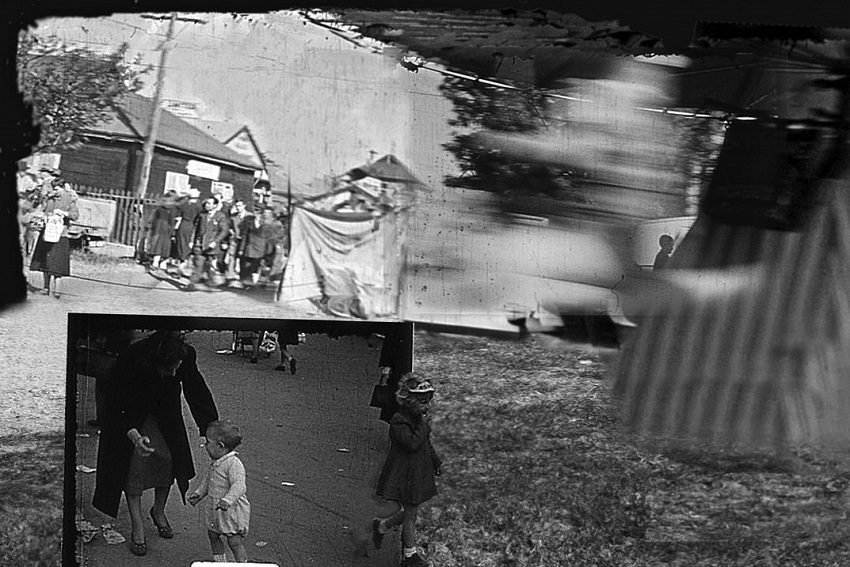Andrew Dearman Explores the Still and Moving Image

Andrew Dearman’s ‘hands on’ approach can be traced across his studio work from the early 1980s to the present.
Five minutes into the movie Moonlight and I wasn’t too sure. Was the fact that the cinema had made a last minute switch and parked the audience in a phone box to blame for the shuddering jump cuts, the Yo-Yo focus and squeaky sound? Then the dawning – this was American cinema playing catch up with the hottest genre ticket in town right now – Trauma Cinema.
Just think of it as one helluva ride down the old time tunnel where instead of wobble wobble time warp graphics you get the old magic lantern title pop ups (Little, Black and Chiron) to pull you through the rites of passage choke points. In Moonlight, Little’s trauma of living with a crack head mother and being bullied is expressed through sound block outs, disconcerting shifts in focus, abnormal colour shifts and so on.
The camera is relentless – wearing its subject like a second skin. Emotions glisten on the skin, ride the air being sucked through nostrils and are balled in clenched fists. So, no car chases, shoot outs or cute plot twists – just moments in time squeezed through the lens of lived experience which sometimes adds up – and often, makes no sense at all. Welcome to life.
Adelaide artist Andrew Dearman’s experimental work with film shares Barry Jenkins’ (director of Moonlight) commitment to find ways for the medium itself to carry the story. Call it ‘New Materialism’ if you like. And just how does this New Materialism present itself? Theorists talk of this as a fresh way to imagine how we understand or create the reality of everyday existence. Conventionally this was held to be a mind over matter/body affair with the mind running the show and the body breathing in and out, drinking enough water, eating, earning and so on to support the mind in doing all the important things. Now, there is a general corrective. Perhaps all that touchy feely stuff – that sense of occupying real, physical space is a key part of the reality package? Like walking and chewing on ideas the same time.
What’s all this got to do with Dearman’s moving images? The artist is fixated on the materiality of images, both animated and still. He began his creative journey as a sculptor. In the early 1980s he made some constructions inspired by Alexander Calder’s 1920s Circus series. These small, mechanical works required the viewer to turn levers to activate them. This ‘hands on’ approach can be traced across his studio work to the present, in a film-based practice that includes animation and experimentation with the Ambrotype photographic technique, invented in the mid-19th century.
“The idea of movement and stillness is present within the relationship between making and presenting,” Dearman says. “The stilled photographic object conceals the considerable labour within their production, consisting of a set of almost choreographed and repeated gestures of the hand that are performed while pouring the chemistry and developing the plate. The moving image works activate, halt, and then reactivate the material and content of the original footage.”
Andrew Dearman, Disappearance (2015) from Andrew Dearman on Vimeo.
Activate, halt, reactivate. These words summarise the Dearman experience. More recently the artist has been working with some rolls of 9.5mm film found in a secondhand market. These were home movies starring a lad called Trevor, his siblings, family and neighbours living around Bowden in the mid 1950s. While the fragility of these films made them virtually unplayable, Dearman adopted the technique of digitally scanning individual frames (approximately 1300) then enhancing each image using Photoshop.
One film Disappearance involved using a selected series of stills from separate takes of a boy and a man near the River Torrens. The digital end product presents these two figures walking within a common panorama. Another fragment, of the boy’s mother in a backyard with washing on the line, was added later with the end result that each of these people, all known to each other, now occupy the ‘same’ space. If you would like to drill down into the theoretical frameworks for such a state of affairs – a reality which isn’t – dip into Michel Foucault’s exploration of the Heretopia as a real place that stands outside of a known space.
Dearman has pressed on. In a current body of work shown the artist has sourced imagery from other home movies from, let us call it the ‘Bowden Hoard’. It’s show time and kids have gravitated to the merry go round. Dearman’s video Around Again offers multiple moments; a boy whizzing around on a bucking horse, milling crowds and individual parents dealing with children.
The emotional message is endearing. This is us, or rather an animated picture of us as a memorizing agency, with fragments of experiences floating (even whizzing) around in our minds. These animations wear their ‘home movie’ origins proudly – all the more for Dearman’s respect regarding the intent of such films to capture private moments for family and friends to share.
For cultural theorists accustomed to talking about such things as ‘New Materialism and ‘agential realism’, this is exciting, contested territory which reflects significant global trends in exploring new relationships between all manner of things in the interest of refreshing an understanding of humanity’s place in the world. Trevor, if he’s still around, would be in his mid 70s. I wonder what he’d make of all this?
Andrew Dearman
The still and moving image
Adelaide Central School of Art Gallery
Monday, May 8 to Friday, June 2
acsa.sa.edu.au